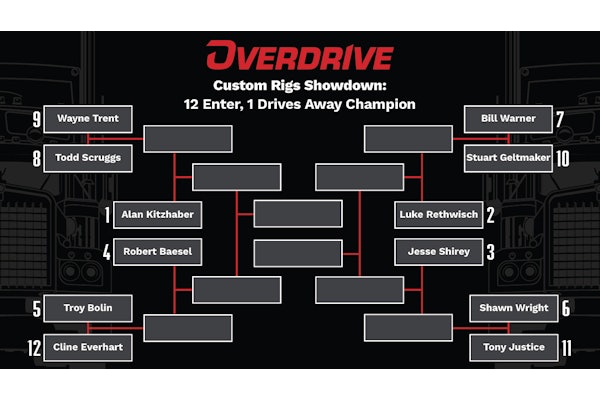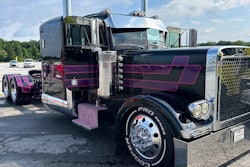Wanted: Young Guns
NASCAR’s ranks are devoid of up-and-coming young drivers. The sport needs to remedy that situation and fast, or it risks losing an entire generation of fans
Next time you’re flipping through the back pages of your favorite racing magazine, don’t be surprised if you run across a personal ad that reads something like this: “Big-time racing league ISO drivers age 20-26. Experience preferred but not required. Personality a plus. Sponsorship $$ or potential to attract sponsors a big must.”
Kyle BuschOK, OK. You probably won’t see that ad anytime soon. But it’s become increasingly clear that NASCAR is in dire need of some fresh, young talent in its Sprint Cup Series. Attendance is down considerably, and — perhaps worse, in NASCAR’s eyes — TV ratings are way down as well.
Much of this decline appears to be caused not by the poor economy, but by the defection of men between the ages of 18 and 34, the young fans NASCAR hopes to build its next generation of support around. For the races it televised earlier this year, Fox Sports revealed that its ratings among that prized demographic were down 29 percent from 2009.
Brad Keselowski“The biggest problem facing NASCAR is that the young males have left the sport,” Fox Sports executive David Hill told the Sports Business Journal. Hill didn’t speculate on what drove these viewers away or what they might be doing instead of watching or attending the races. But I wonder about this possibility:

Is NASCAR losing its young fans because there are so few young drivers in the Sprint Cup?
Did you realize that there were no rookies in the Daytona 500 this year? Or that the only true Sprint Cup rookie this year was 31-year-old Kevin Conway, who lost his ride in the No. 34 Ford in August after averaging a 32nd-place finish for the first two-thirds of the season?
Denny HamlinIn fact, of the Sprint Cup regulars I consider legitimate talents, only four are under the age of 30: Brad Keselowski, Joey Logano, Kyle Busch and Denny Hamlin, who turns 30 in November.
This young driver drought comes on the heels of NASCAR’s amazing growth spurt over the past 10 years or so. During that time, the sport cranked out young star after young star. Tony Stewart first made his mark in 1999, then in 2000 it was Dale Earnhardt Jr. and Matt Kenseth, then Kurt Busch and Kevin Harvick in 2001, Jimmie Johnson and Ryan Newman in 2002, Greg Biffle in 2003, Kasey Kahne in 2004, Kyle Busch and Carl Edwards in 2005 and Denny Hamlin in 2006. Since then, not so much — a Juan Pablo Montoya here and Logano there.
Joey LoganoNASCAR must sit down with its team owners and biggest sponsors and hammer home the need for a legitimate youth movement for everyone’s long-term benefit. Of course, no one would advocate forcing young drivers into jobs they’re not ready for, but I believe the young talent is out there in various other racing series, and everyone involved needs to realize the good it would do to clear the path up the driver-development ladder.
The sponsors would be the toughest sell. These companies want immediate results for their dollars. That’s why so many teams stick with familiar big-name drivers, even some of those on the downside, rather than giving seats to up-and-comers. Sponsorship demands are also why so many Sprint Cup drivers compete so frequently in the Nationwide Series.
That is where NASCAR should step in. The current logjam of very good Sprint Cup drivers in the prime of their careers isn’t going away anytime soon — and it shouldn’t. These stars are powering NASCAR’s success right now. Instead, NASCAR ought to formally declare the Nationwide Series a developmental league and aggressively brand it as the home of “Tomorrow’s Stars Today.” Sprint Cup regulars should be discouraged from running with this rule: Any driver who participates in a Nationwide race is ineligible to run in a Sprint Cup race the same weekend. That would take care of most of the problem.
With that rule in place, the Nationwide Series again would have plenty of rides open for up-and-coming drivers. And the good ones would become famous more quickly because they could actually win races instead of finishing an anonymous fifth every week behind the glory-hogging Harvicks, Busches and Edwards of the world.
Such a radical change would take a complete buy-in from the team owners and the sponsors and a huge marketing push from NASCAR. But if the only other option is to lose an entire generation of young fans, it seems like a reasonable price to pay.
Kay Bell is an Austin, Texas-based writer. When she’s not yelling at her television during NASCAR races, she blogs about taxes and other financial topics at www.dontmesswithtaxes.typepad.com.
LOOSE LUGNUTS
Oh where art the Camaro? The Nationwide Series is taking a big step forward by developing new cars being tested this year — and offering the car companies a fantastic marketing opportunity. Ford and Chrysler saw the light, and their cars will be Mustangs and Challengers. Chevrolet, however, has decided not to bring the Camaro to the series, but rather continue with an Impala body style. Ugh. Sorry, Chevy, whatever reasons you might have for this decision, you blew it big-time.
Hall passes NASCAR has unveiled 25 nominees for its second class into the NASCAR Hall of Fame and will announce the five inductees in October. Only five people were inducted last year, so there are still many who richly deserve to be enshrined, but I know who I’d pick: David Pearson (105 wins, 3 championships); Rick Hendrick (12 championships as team owner); Dale Inman (crew chief who won seven championships with Richard Petty and one with Terry Labonte, essentially creating the job of modern day crew chief); and Lee Petty (Richard’s father won the first Daytona 500 and became the first three-time champion). My fifth choice is my personal favorite: Curtis Turner. Known as the “Babe Ruth” of racing, he won 17 Grand National (now Sprint Cup) races and a total of 360 races overall and built the Charlotte Motor Speedway. He also was the first to qualify at over 180 mph and won two Grand National races after taking the pole and leading every single lap. His most outstanding feat came in 1956 when he won the NASCAR race in Asheville, N.C., because, at the end, his was the only car still running!
Checkers and big checks Dale Earnhardt Jr.’s paucity of wins in recent years isn’t hurting his wallet yet. According to Forbes Magazine, Junior amassed $30 million in total earnings over the past year, more than any other NASCAR driver. Jeff Gordon was second with $26.9 million, and Jimmie Johnson third at $23 million. Globally, Kimi Raikkonen topped the list at $34 million. Motorcycle racer Valentino Rossi is second with $32 million. Also high on the list are F1 drivers Lewis Hamilton ($29 million) and Michael Schumacher ($28 million).









